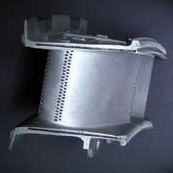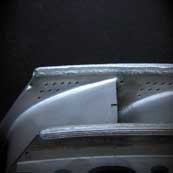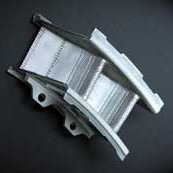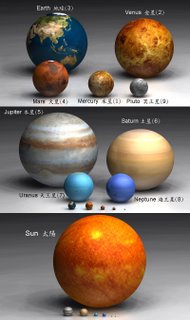Wednesday, January 09, 2008
Gas Turbine Heat Transfer 2008
Click on the slideshow to access the album at Picasa
Tuesday, February 13, 2007
An experiment that hints we are wrong on climate change
More can be read at http://antigreen.blogspot.com/2007/02/experiment-that-hints-we-are-wrong-on.html
Wednesday, June 14, 2006
Extracting hot & cold air...
Answer:
Monday, June 05, 2006
Nanomaterials...Better Materials
They all represent a unique merger of structure, form and function. These natural and man made structures rely on an exquisite control of materials internal structure, often referred to as the micro- or nanostructure of the material, to achieve their function.
Find more at GE's Blog spot
Its really a nice site !!!
Sunday, June 04, 2006
The Woman Who Never Forgets
By Susan Kruglinski
DISCOVER Vol. 27 No. 06 | June 2006 | Mind & Brain
"I can remember everything that has happened to me—what day it was on, what was happening in the world, who was in my life at the time, and usually what the weather was like," says the subject known only as AJ. Researchers at the University of California at Irvine describe AJ as the first reported case of a person capable of near-perfect feats of recollection without using mnemonic tricks.
But K. Anders Ericsson, a cognitive scientist at Florida State University, contends that his research shows how ordinary people can easily acquire extraordinary recollection skills. AJ kept a 24-year diary and admits that she ruminates over dates and events. That obsessive quality may be the key to her ability, Ericsson says. "It's possible that anyone who put in half an hour a day thinking about what they were doing would be able to build up a memory comparable to hers." James McGaugh, one of the Irvine scientists who has studied AJ, remains convinced of her superlative memory and is determined to find out how it works. "She is not a mnemonist," he says. "She does it naturally and inadvertently."
To read an interview with AJ, click here
The Dark Side of the Sun

Scientists spot solar storms before they spin this way
By Bjorn Carey
DISCOVER Vol. 27 No. 06 | June 2006 | Astronomy & Physics
On the sun, what you can't see can fry you. The sun rotates so slowly that it takes about a month to complete one turn, meaning that activity on its farside is hidden for up to two weeks at a time. If a giant magnetic storm is brewing on the farside, it will hit Earth with a flood of radiation as it finally rotates into view. That happened in 2003, when the unexpected blast knocked out communications satellites and interfered with airplane navigation systems. Now scientists using NASA's Solar and Heliospheric Observatory (SOHO) satellite can peer right through the sun and anticipate such storms well before they hit.
The secret is learning to "see" the sun in sound, says Phil Scherrer of Stanford University. Every second about 7,000 California-size bubbles of hot plasma rise to the surface of the sun and pop, creating a cacophony of sound waves. As the waves reverberate through the interior, they reflect off the surface of the sun's farside before returning to the front, where they create a slight ripple that SOHO's instruments can detect. Sound waves speed up when they hit a magnetically active region on the back side, so if they return to the front a bit sooner than normal, that means a magnetic storm is brewing.
The new method should give significantly more advance warning to satellite operators and air traffic controllers. It may help protect astronauts on the moon or traveling to Mars (see "Impossible Journey?"). "Now we don't have to wait to see the storm," Scherrer says. "You can see that it's coming around the corner."
No More Nerve Damage
| A new drug reverses nerve damage in diabetics. |
| By Eva Gladek |
| May 26, 2006 | Biology & Medicine |
It could be the first treatment for a terrifying problem faced by people with diabetes – the nerve damage that's a leading cause of amputations. A new drug being tested in people with diabetic nerve damage uses a patient's own genes to treat them.
Diabetic neuropathy nerve damage, which causes a loss of sensation in the hands and feet, can allow small injuries to go unnoticed and become severely infected, to the point where amputation is the only option. Tight control of blood sugar can keep neuropathy at bay, but there is no cure.
"There are a variety of medications that are available now that can help with the pain but unfortunately, there's nothing available to help with numbness or prevention of nerve damage," says diabetes specialist Mark Kipnes, MD, director of the Diabetes and Glandular Disease Research Clinic in San Antonio, Texas.
Friday, June 02, 2006
TTML Week End Seminar Series - old ppt
You can download the PDF file of the presentation file from here.
The content of the .ppt is purely taken from Internet resources. Even though some references were not shown in the ppt, it is not intentional and the resources are acknowledged now.
If you want to view the original ppt, please mail me to sekarannk@gmail.com
TTML Week End Seminar Series
We started with lots of Zeal and interest. it went nicely for some time (few weeks) and then came to a halt, because of the exams and semester ending. Some inertia was there to start it again. This week (today) we emerge as "Pheanix" to start the first seminar after the break. I took the session entitled, "Gas Turbine Blade Manufacturing".
The content of the .ppt is purely taken from Internet resources. Even though some references were not shown in the ppt, it is not intentional and the resources are acknowledged now.
You can download the PDF file of the presentation file from here. If you want to view the original ppt, please mail me to sekarannk@gmail.com





